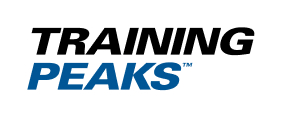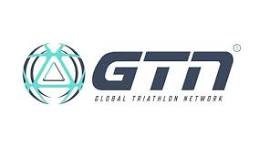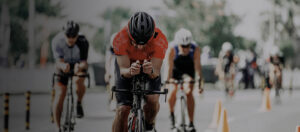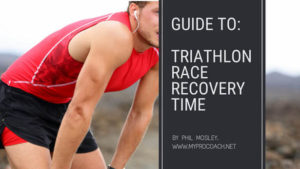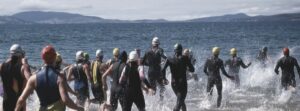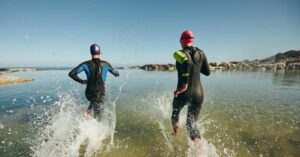Thinking of trying an IRONMAN 70.3? Here are the facts you’ll need to know.
You’ve sauntered through the sprint, owned Olympic distance and now you’re after a real challenge – the Half Ironman. Okay, hyperbole and clearly not true. What the first two might lack in duration, they more than compensate for in intensity. But for many triathletes, the natural next step in their multisport journey is Half Ironman. This is where you do battle with a 1.9km (1.2-mile) swim, 90km (56-mile) bike and 21.1km (13.1-mile) run.
How long will the battle to the finish line take? There are so many variables – age, gender, course terrain – that it’s impossible to prescribe absolutes but, as a snapshot, a good time in the men’s 35-39 age-group is around six hours; for the women, you’re looking at an extra hour.
We’ll elaborate on the myriad variables that lie ahead but, before we stride on, clarification is required – namely the name of your challenge. You see, while many of us call it Half Ironman, that’s arguably old school. Since 2005, Half Ironman’s been known as Ironman 70.3 with that number referring to the overall distance in miles (which converts to 113 km). But this Ironman 70.3 moniker technically applies only to events organised by the World Triathlon Corporation (WTC), whose reputation and wealth was built on the world’s most famous triathlon – Ironman Hawaii.
You have Ironman 70.3 Japan, Ironman 70.3 Ecuador, Ironman 70.3 Boulder… In fact, the WTC organize over 170 triathlons worldwide. Thankfully, it’s impossible to have a monopoly on that distance, and there are many fantastic races around the world that sit under either half triathlon or middle-distance triathlon umbrellas. Ironman’s main rival, the Challenge group who host the bucket list race Challenge Roth, tend to call theirs middle-distance.
Right, now we’ve released ourselves from the lexicon lasso, we can dig deeper into the individual disciplines of Half Ironman/Ironman 70.3/half triathlon/middle-distance triathlon (delete as applicable!), starting with that 1.9km swim…
The 1.9km Swim
Like every triathlon, the swim presents unique challenges depending on which body of water you’re racing in…
Sea swim
Clearly, the greatest challenge is the waves with the swell disrupting your stroke, sighting and breathing patterns. When it comes to your stroke, a faster arm turnover and straighter arm recovery are more efficient in choppy waters than the pool technique of high elbows, a slow cadence and long glide at the front of the stroke. A Finis Tempo Trainer, that sits beneath your swim cap, is a neat tool to help you accelerate arm turnover by following the metronomic beeps.
When it comes to sighting over the waves, the head-up drill, where you rest your chin on the surface of the water, acclimatises you to swimming while looking forward. This has the added benefit of improving your catch. When it comes to breathing, learning to breathe bilaterally is a useful skill to learn to cope with whichever direction the waves are breaking over you.
River swim
The greatest challenge here is the current. Key is positioning. If you imagine a cross-section of a river, it’s shallower near the banks before deepening in the middle. Deeper water equals faster water, so position yourself around the middle when swimming downstream. Conversely, that’s why you should place yourself near the banks when swimming upstream – the water moves slower. One method to practise positioning in the pool is to swim right by the lane or side. Using a straight-arm recovery will inch you even closer to the side.
Lake swim
This is a good choice for your first Half Ironman as it should be much calmer than a sea or lake triathlon. Mind you, with no riverbed to guide you, sighting is even more critical. The lack of waves or current means you can keep your eyes as low as possible in a lake and so remain streamlined. The ideal technique is: slight head lift, eyes up and looking forward, and then breathe as you rotate your head to one side before immersing in the water. That way, you shelter the breath and get air in the pocket to left or right. You can practise this indoors by lifting your head two or three times in the middle of a 25m length. But make sure you fix your gaze on something, not just look randomly around.
The 90km Bike
The increase from the Olympic-distance 40km bike leg to 90km means your nutritional strategy is even more important, whether the route is flat, hilly or mountainous. Key is that you start to eat and drink as soon as you’ve settled into a rhythm post-transition. How much you drink depends on the weather conditions but, depending on heat, you’re looking at between 500ml-1,000ml an hour. And top up your water bottles with an electrolyte tablet for vital sodium supplies. As for feeding, 60g-90g carbohydrates an hour is the ideal from a range of sources. These include energy bars, gels, drinks and homemade morsels like rice cakes or even jam sandwiches.
Pacing is also key and is where a heart rate monitor or/and power meter comes in. On the bike, you should look to maintain an effort at around 76-82% of your maximum heart rate with newcomers aiming for the lower end of that range. If using a power meter, aim for 75-90% of your functional threshold power output.
Finally, it’s an obvious one, but a flat course is preferred for your debut Half Ironman. Save the mountains for competing rather than completing!





